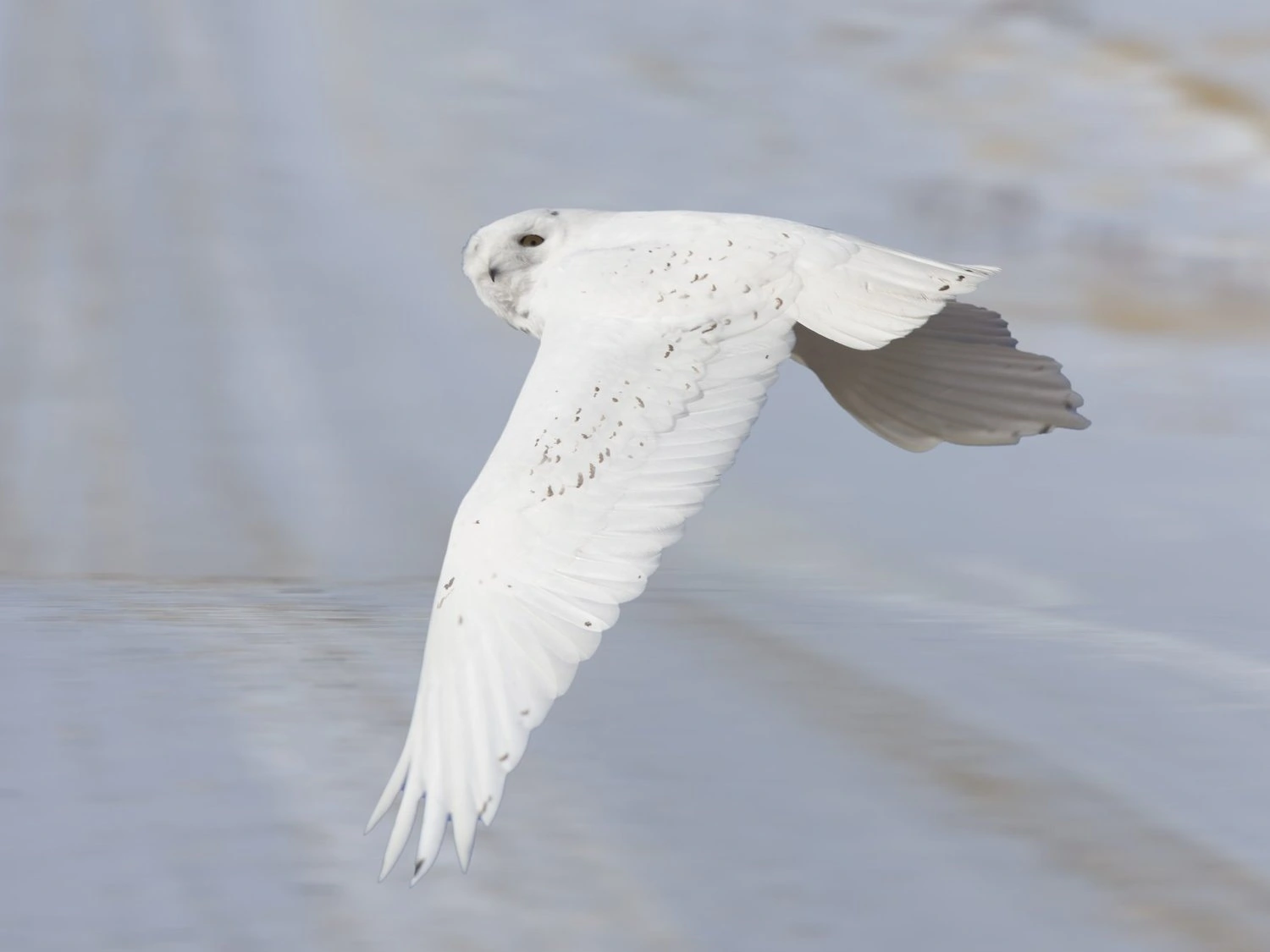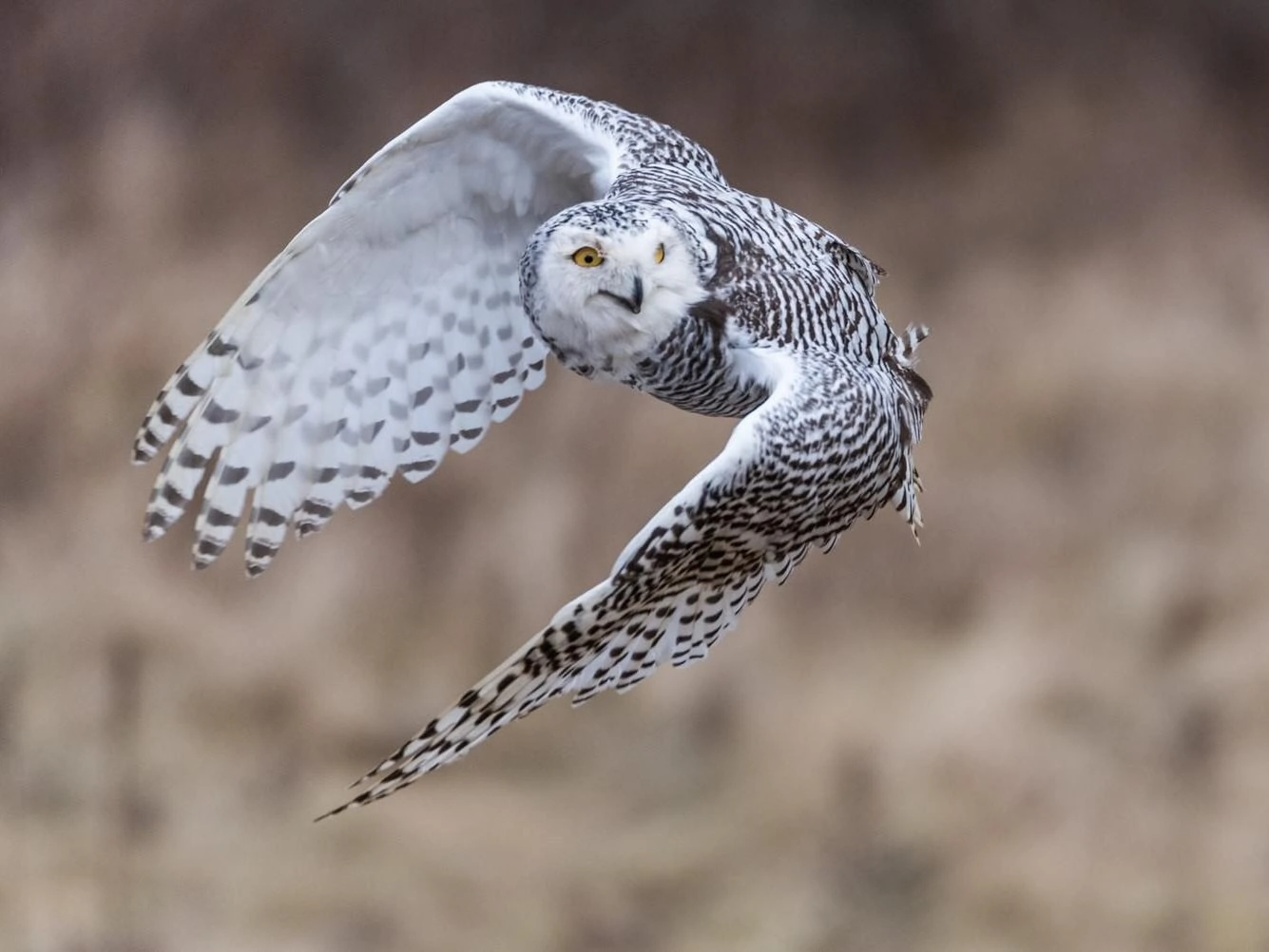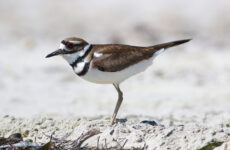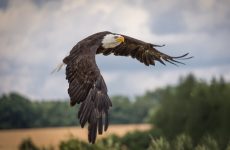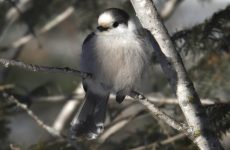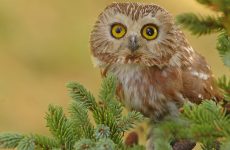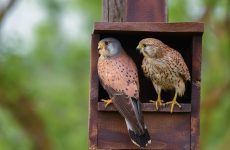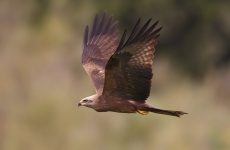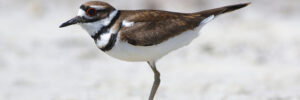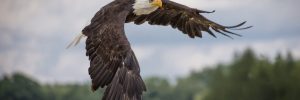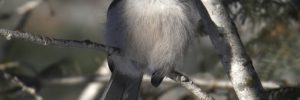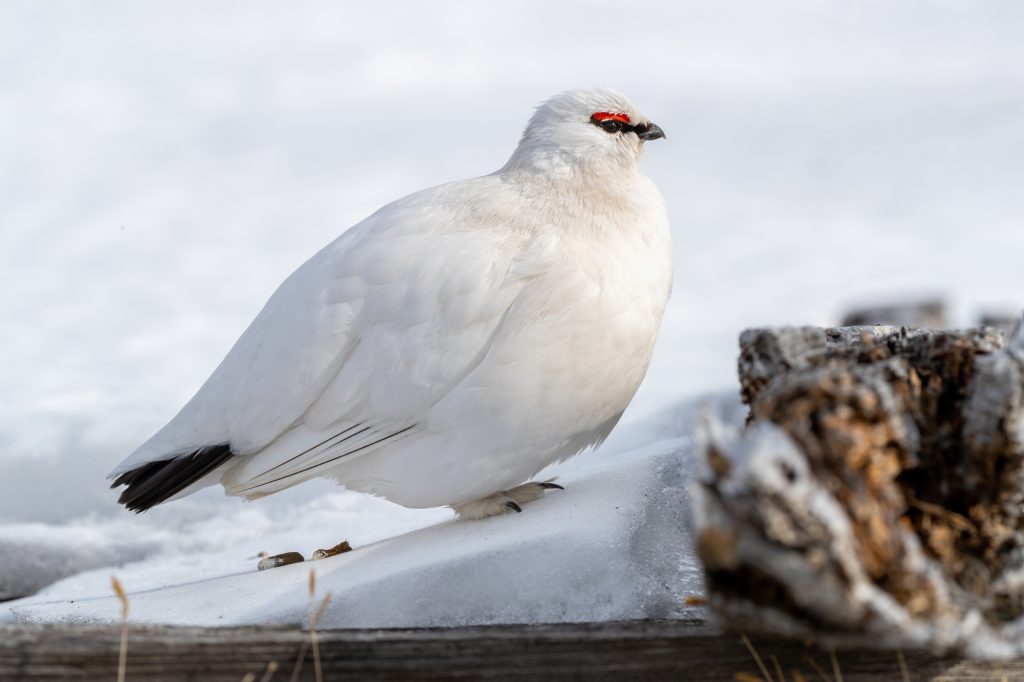
From egrets to Snowy Owls there is something mesmerizing about white birds that means you can’t quite take your eyes off of them and want to know more.
But there are so many similar-looking white birds, especially egrets, herons, and ibis. So how do you know which is which?
Well, you have come to the right place as this guide will help you identify white birds by sight and sound and know which times of the year they are in Alaska to help you narrow down the options and find out more about birds near you.
White Birds In Alaska By Season
White Birds in Alaska all year: Rock Pigeon, Trumpeter Swan, Great Blue Heron, Rock Ptarmigan, Gyrfalcon, White-tailed Ptarmigan
White Birds in Alaska in summer: Tundra Swan, Willow Ptarmigan, Snowy Owl
White Birds during migration in Alaska: Snow Bunting, Snow Goose
This guide will help you identify those white birds out on the water or in the woods or fields and are listed from most to least common according to checklists submitted by bird watchers on ebird for Alaska.
11 White Birds In Alaska
1. Snow Bunting
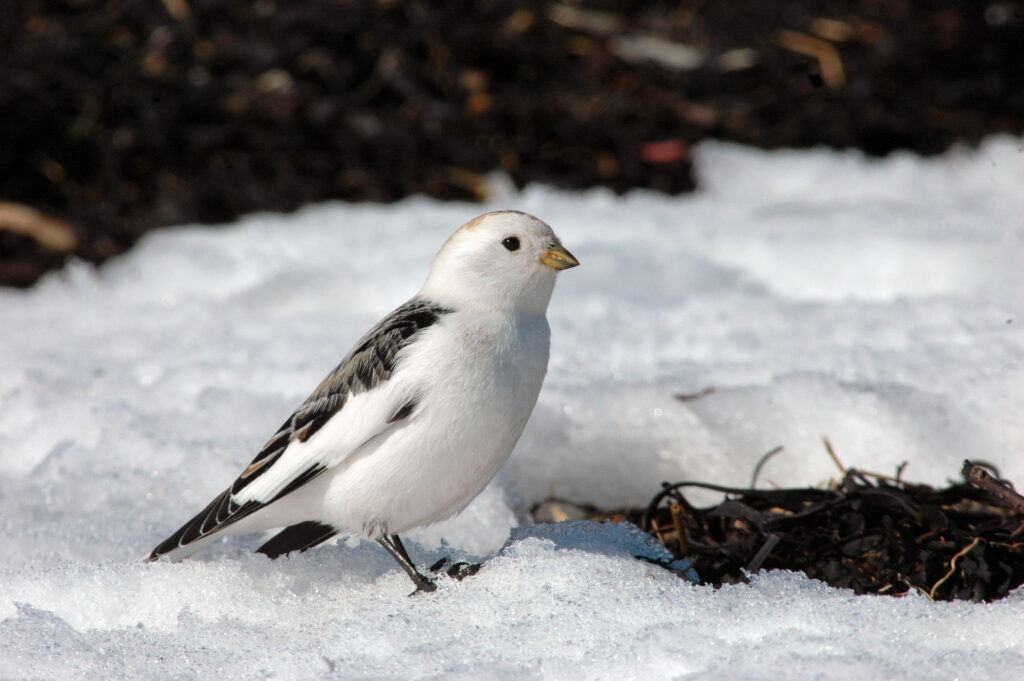
Snow Buntings are spotted across Alaska during migration but they breed along the coast and in the south of the state, and a few stay until winter around the south coast.
They are recorded in 7% of summer checklists and 2% of winter checklists submitted by bird watchers for the state.
Snow Buntings are medium-sized, gregarious songbirds that inhabit the high Arctic.
Breeding adult males are all white except for black on their backs and wings. Breeding adult females are streaked brown on the back and pale underneath.
Non-breeding male and female Snow Buntings are quite similar with streaked backs, white undersides, and brown patches on their heads. However, non-breeding female Snow Buntings have a stronger reddish coloring than males.
Juvenile Snow Buntings are mostly gray everywhere with dark wings and lighter gray bellies.
- Plectrophenax nivalis
- Length: 6 – 7 in (15 – 17 cm)
- Weight: 1 – 2 oz (28 – 50 g)
- Wingspan: 12 – 14 in (32 – 38 cm)
Snow Buntings breed in Alaska and northern Canada before migrating to southern Canada and the United States for winter. They are also found in western Europe and eastern Russia.
You can find Snow Buntings in rocky habitats in the Arctic during summer. They will also be around areas rich in vegetation like meadows and those places with lichens. In the winter, they may be hard to find because they blend so well in their surroundings, particularly in barren fields.
Snow Buntings usually forage for weeds and seeds on the ground or collect them from flowering plants. They also occasionally eat insects and small crustaceans when near the coast.
Snow Bunting Calls:
Nests of Snow Buntings are hidden in rocky crevices in boulder fields. Females line the nest with moss, grass, feathers, and fur to keep the eggs warm.
She will lay up to seven eggs and will stay on the nest for the whole incubation period of ten to fifteen days. The male’s job is to feed his partner as she cannot leave the nest.
Fun Fact: Unlike other songbirds, Snow Buntings’ feathers do not molt and change color by rubbing the brown tips of the feathers to reveal the white feathers below.
2. Rock Pigeon
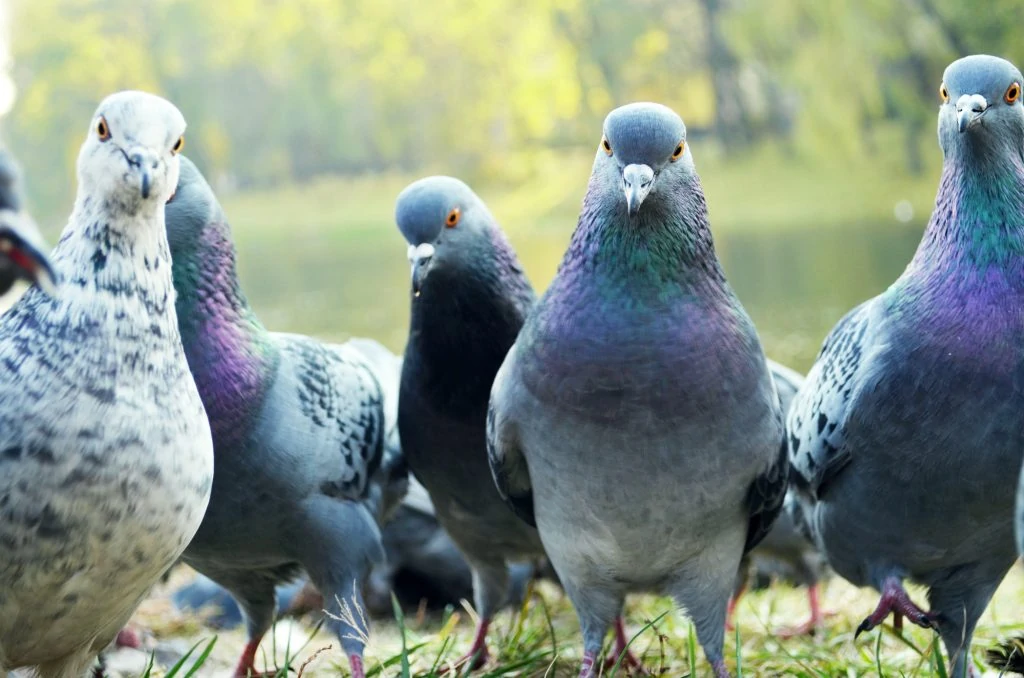
Rock Pigeons are an introduced species in Alaska and they are residents here all year but are most common from October to April. They are spotted in the southeast of the state and appear in 3% of summer checklists and 8% of winter checklists.
Rock Pigeons are well recognized around towns and parks and are usually blueish gray with two black bands on the wing and black on the tail tip. They have iridescent throat feathers and orange eyes.
However, they can also be white, spotted, or red.
- Columba livia
- Length: 11.8-14.2 in (30-36 cm)
- Weight: 9.3-13.4 oz (265-380 g)
- Wingspan: 19.7-26.4 in (50-67 cm)
Rock Pigeons do not migrate and can be found in all US states, southern Canada, and the Pacific Coast to Alaska.
You can find Rock Pigeons in cities, parks, and backyards, especially if there is birdseed on the ground. Some cities have ordinances against feeding pigeons as they are considered pests.
Rock Pigeon Call:
Fun Fact: Rock Pigeons have an amazing ability to find their way home using the earth’s magnetic field.
3. Trumpeter Swan
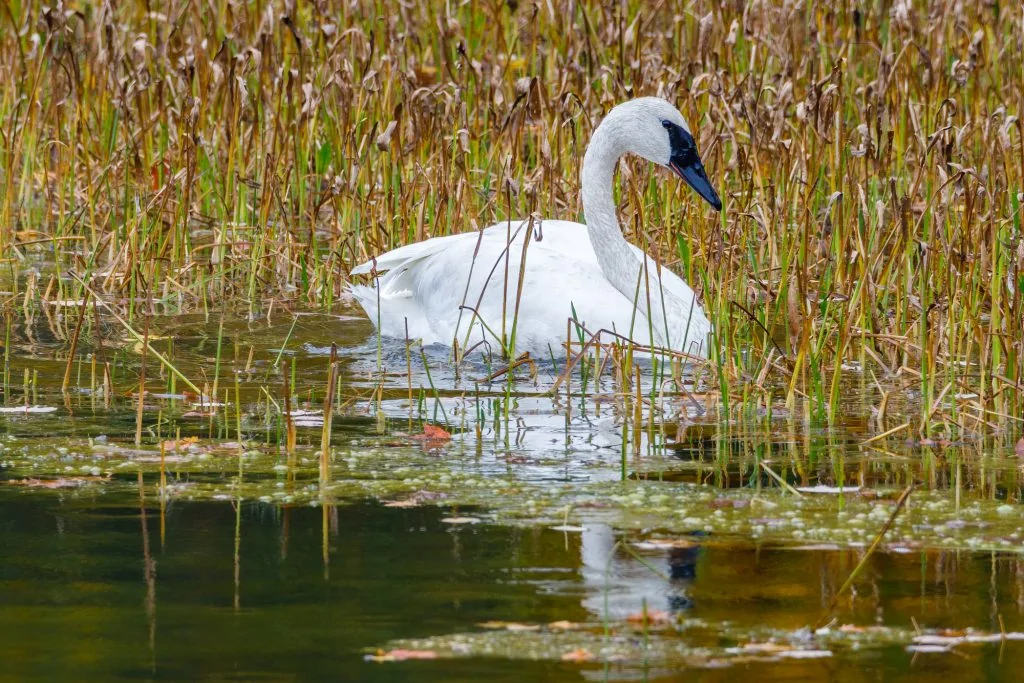
Trumpeter Swans are spotted in Alaska all year, but their numbers increase during migration from April to May and October to November.
They are recorded in 4% of summer and winter checklists submitted by bird watchers for the state and up to 12% of checklists during migration.
The Trumpeter Swan has the distinction of being the longest and heaviest living bird native to North America. It is also recognized as the heaviest flying bird in the world.
Trumpeter Swans are entirely white except for their black bills, legs, and feet. There is a black patch on their face, seemingly connecting their eyes to their bills. Their heads and neck may occasionally show some rust-brown coloring because of their contact with iron elements in wetland soils.
Juvenile Trumpeter Swans are mostly dusky-gray, with a pink center on their black bills.
- Cygnus buccinator
- Length: 58 – 72 in (147 – 183 cm)
- Weight: 401.6 oz (11381 g)
- Wingspan: 72 – 102 in (183 – 259 cm)
Trumpeter swans breed in Alaska and western and southern Canada before migrating to ice-free coastal regions. Those in northwestern and northern US states often stay all year but may move around depending on the weather.
You can find Trumpeter Swans in marshes, lakes, and rivers with dense vegetation. They breed in open areas near shallow waters. They are sometimes seen on agricultural fields, too.
Trumpeter Swans Call:
Fun Fact: Trumpeter Swans generally mate for life. When nesting, there is always one adult that stays with the nest. They are both territorial and aggressive when it comes to protecting their nesting area.
4. Tundra Swan
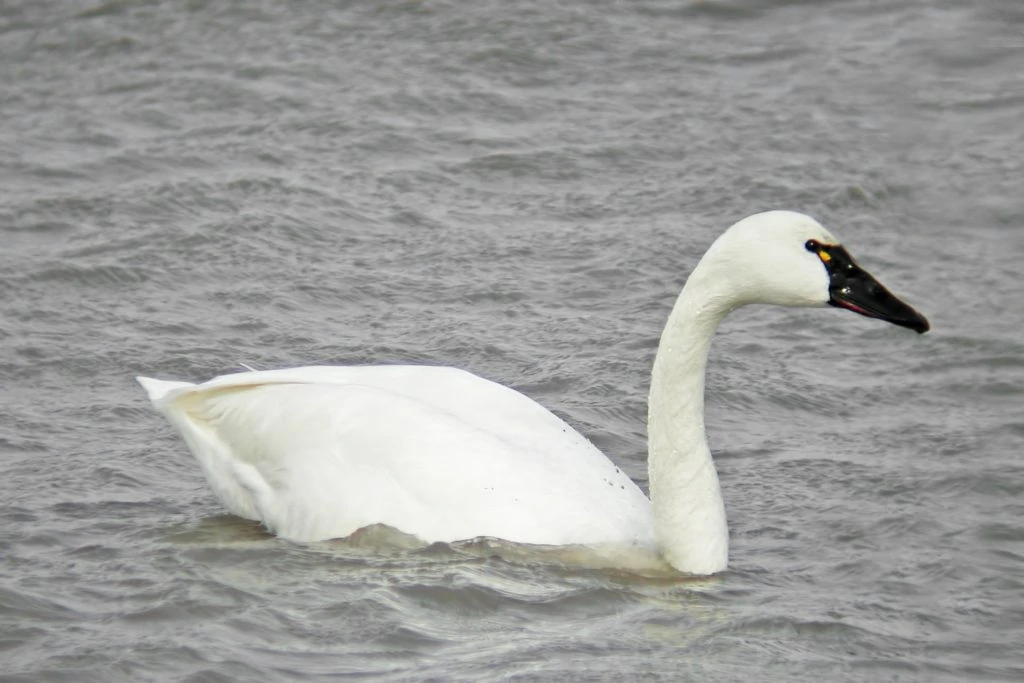
Tundra Swans are mainly spotted in Alaska from April to November, but some are occasionally spotted all year. They appear in 6% of summer checklists.
Tundra Swans are identifiable because of the yellow patches at the base of their bills, but sometimes these do not appear. They have entirely white bodies with long necks and black bills, legs, and feet.
Juvenile Whistling Tundra Swans are pale brown with white highlights and a mostly pink bill with a black tip and base.
- Cygnus columbianus
- Length: 487 – 58 in (119 – 147 cm)
- Weight: 370.37 oz (10496 g)
- Wingspan: 72 – 84 in (183 – 213 cm)
Tundra Swans breed predominantly in Alaska and Canada before migrating to the United States for winter.
You can find Tundra Swans, as their name suggests, in Arctic tundra. They mostly form flocks in wetlands, marshy lakes, ponds, estuaries, and bays. They also flock together in agricultural fields.
Tundra Swans Call:
Fun Fact: The Tundra Swan used to be called “Whistling Swan” because of the sound their wings make in flight.
5. Great Blue Heron
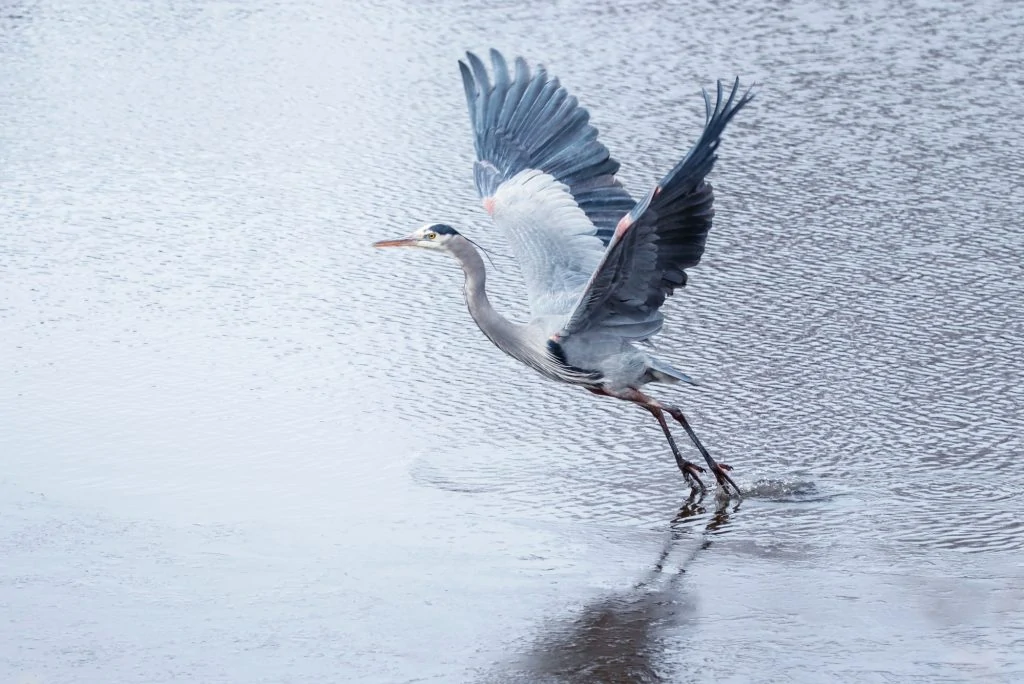
Great Blue Herons are spotted all year in southern Alaska but they are most common from September to December. They are recorded in 1% of summer checklists and 4% of winter checklists.
Great Blue Herons are very large, majestic birds that are the largest heron native to North America. Their pale gray bodies can look white in flight.
They have a white face with a black crest or plume that extends from the front of their eyes to the back of their heads. Their bills are yellow-orangish.
They have long gray necks with black and white streaking in the front, pale grayish-blue bodies with dark wingtips, and long gray legs.
The Great Blue Heron has a white morph subspecies called the Great White Heron in Florida.
- Ardea herodias
- Length: 46 – 52 in (117 – 132 cm)
- Weight: 128 oz (3628 g)
- Wingspan: 77 – 82 in (196 – 208 cm)
Great Blue Herons remain in most US states all year, but those that breed in the Mid-West and Canada migrate south.
You can find Great Blue Herons in many wetland environments. They can be present in fresh and saltwater marshes, mangrove swamps, flooded marshes, lake edges, or shorelines.
Great Blue Heron Call:
Fun Fact: Great Blue Herons defend their feeding territory with dramatic wing outstretched displays, with their heads thrown back.
6. Willow Ptarmigan

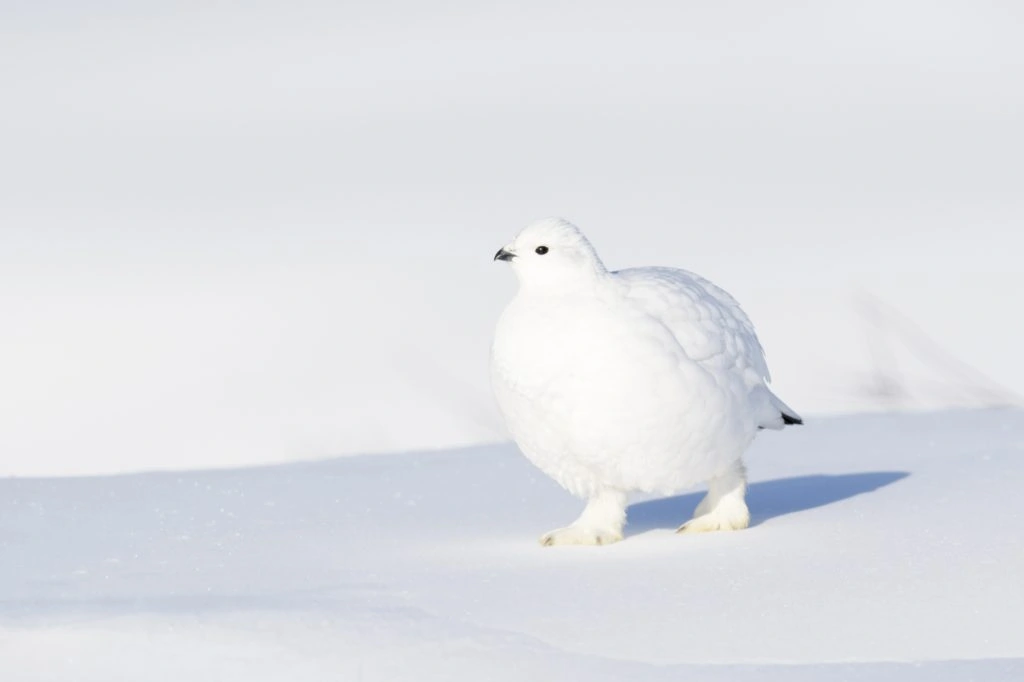
Willow Ptarmigans spend the breeding season in Alaska and occur in 3% of summer checklists. They are most common from May to October but there are also some sightings all year.
Willow Ptarmigans also called “willow grouse”, are short, plump, and chicken-like birds with feathered legs and feet from the grouse family. Males and females are similar in size but have different seasonal physical appearances.
During the summer and the breeding season, adult male Willow Ptarmigans have brown heads, necks, and upper breasts with a reddish hue. They have bright red eye combs or eyebrows, and their eyes have white eye-rings. Their bills are short, curved, and black. Their wings and underparts are white. Their tails are black.
Adult female Willow Ptarmigans are a combination of brown, black, and white with a mottled pattern. They have barely-visible red eyecombs, and their bills are also short, curved, and black.
When winter comes, adult Willow Ptarmigans are completely white except for their black eyes and bills and the black edges on their tails.
- Lagopus lagopus
- Length: 15 – 17 in (38 – 43 cm)
- Weight: 2.8 oz (589 g)
- Wingspan: 20 – 22.5 in (51 – 57 cm)
Willow Ptarmigans are predominantly found in Canada and northern Europe.
You can find Willow Ptarmigans in damp areas like pine and birch forests and thickets with willow and alder trees during the breeding season. In the fall, they move into drier and stonier habitats as they molt into their winter plumage. In winter, females move into lower altitudes and densely vegetated areas.
Willow Ptarmigan calls:
Fun Facts: In Britain, they’re called Red Grouse as their feathers don’t turn white when it’s winter there.
7. Snow Goose
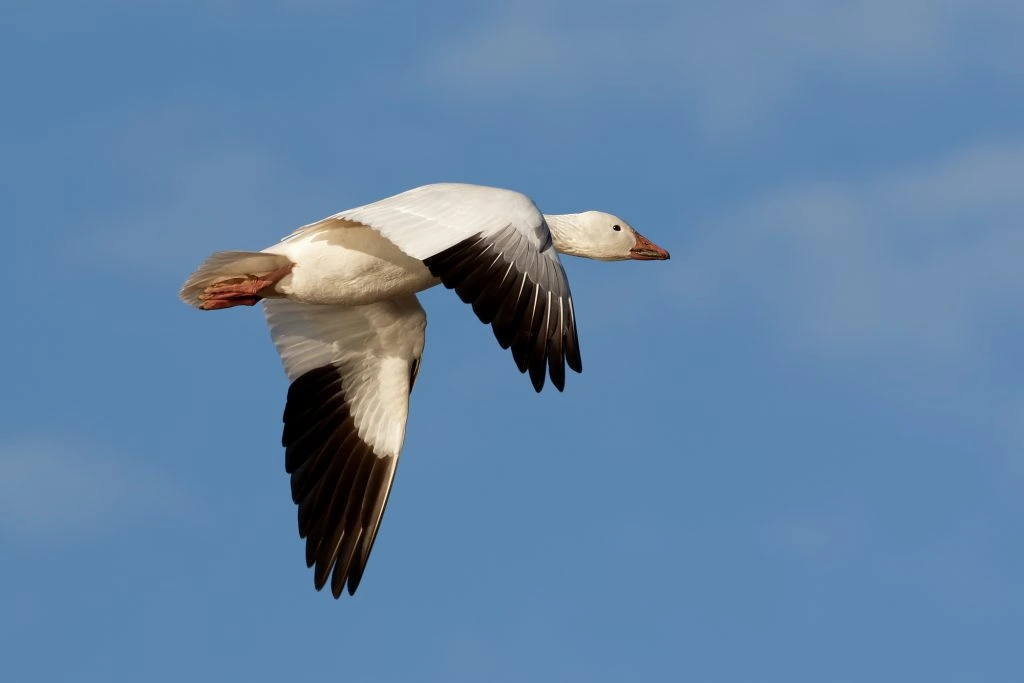
Snow Geese are usually spotted in Alaska from April to June and in October, but some are also spotted all year. They are recorded in 6% of checklists during spring and 1% of checklists during fall.
The Snow Goose is aptly named because this goose is totally white except for its black wingtips, pink bill with a black grin patch, and pink legs and feet.
Interestingly, it has another variant, called the Blue Goose, which has a white head but a dark blue-gray body. Both variants of the Snow Geese may occasionally have a “stained” head due to their feeding.
The sexes of both variants are similar though they may vary in size. Males tend to be larger than females.
Juvenile white morphs have a dusky gray-brown coloring, and juvenile blue morphs are dark gray. However, they both still have the recognizable pink bill and black grin patch.
- Anser caerulescens
- Length: 25 – 31 in (64 – 79 cm)
- Weight: 81.13 oz (2299 g)
- Wingspan: 54.3 in (138 cm)
Snow Geese breed mainly in Canada and spend winter in the United States.
You can find Snow Geese and Blue Geese together in freshwater marshes and agricultural grain fields. In winter, they favor salt marshes and coastal bays, but they still visit plowed cornfields or wetlands.
Snow Goose Call:
Fun Fact: Snow Geese choose the same color morph as themselves when breeding and will mate for life.
8. Rock Ptarmigan
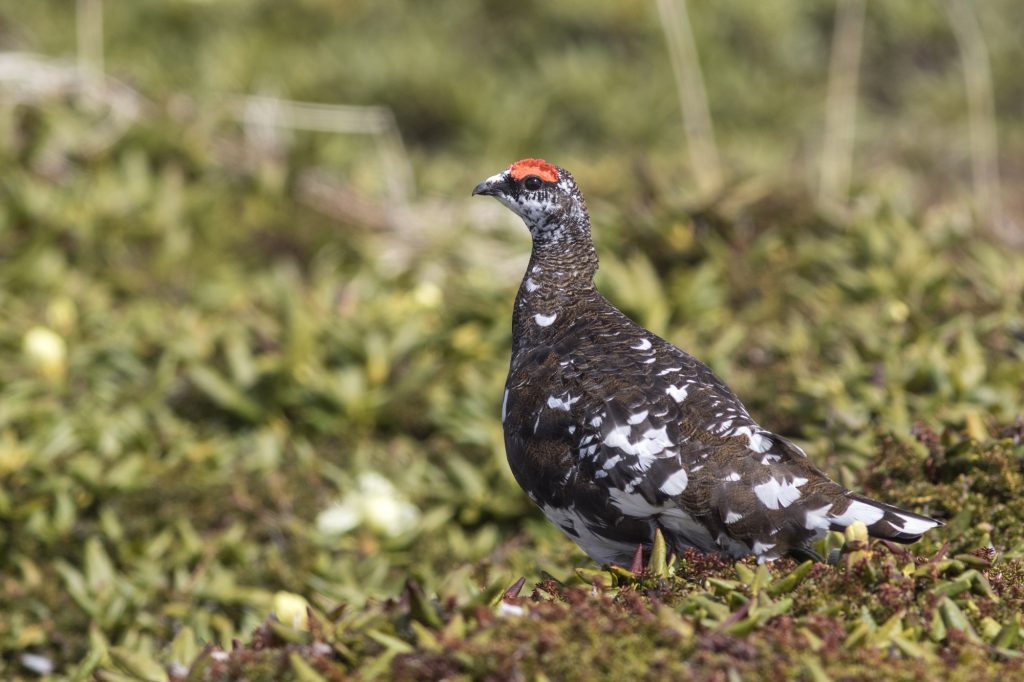

Rock Ptarmigans do not migrate and are residents of Alaska all year.
The chunky Rock Ptarmigan is best known for its different camouflage colors during the summer and winter seasons. It is also very similar in appearance to the Willow Ptarmigan.
Breeding male Rock Ptarmigans have grayish or dark brown mottled heads and upperparts during the summer season. They have red eyecombs and short, down-curved black bills. They have white underparts and wings, and white feathered legs and feet.
Breeding female Rock Ptarmigans are similar to males but they are brown, black, and white and smaller.
In winter, non-breeding male Rock Ptarmigans are almost all white except for their striking red eyecombs, distinct black eyeline, bills, and outer tail feathers. Non-breeding females are similar but without the eyeline and comb.
Juveniles look similar to breeding females but instead of having white wings, it’s only the tip that bears any white color.
- Lagopus muta
- Length: 13 – 14 in (33 – 36 cm)
- Weight: 14.9 oz (422 g)
- Wingspan: 23 in (58 cm)
Rock Ptarmigans are found in Canada, Greenland, and western Europe.
You can find Rock Ptarmigans in the dry, rocky tundra, hence their name. Their camouflage for summer is especially effective since it seems that they disappear in the face of the rocky terrain. They are likely to stay in places with some vegetation.
Winter habitats for males are usually alpine-like environments while females prefer more hiding places.
Rock Ptarmigan calls:
Fun Fact: Male Rock Ptarmigans dirty their white feathers after mating to hide from predators as the snow melts and they wait to molt. They also use their feathered feet to dig burrows in the snow, keeping them out of the intense cold.
9. Snowy Owl
Snowy Owls breed in Alaska, mainly around the northern coast, from June to October. They are recorded in 1% of summer checklists submitted by bird watchers for the state.
- Bubo scandiacus
- Length: 20.5-27.9 in (52-71 cm)
- Weight: 56.4-104.1 oz (1600-2950 g)
- Wingspan: 49.6-57.1 in (126-145 cm)
10. Gyrfalcon
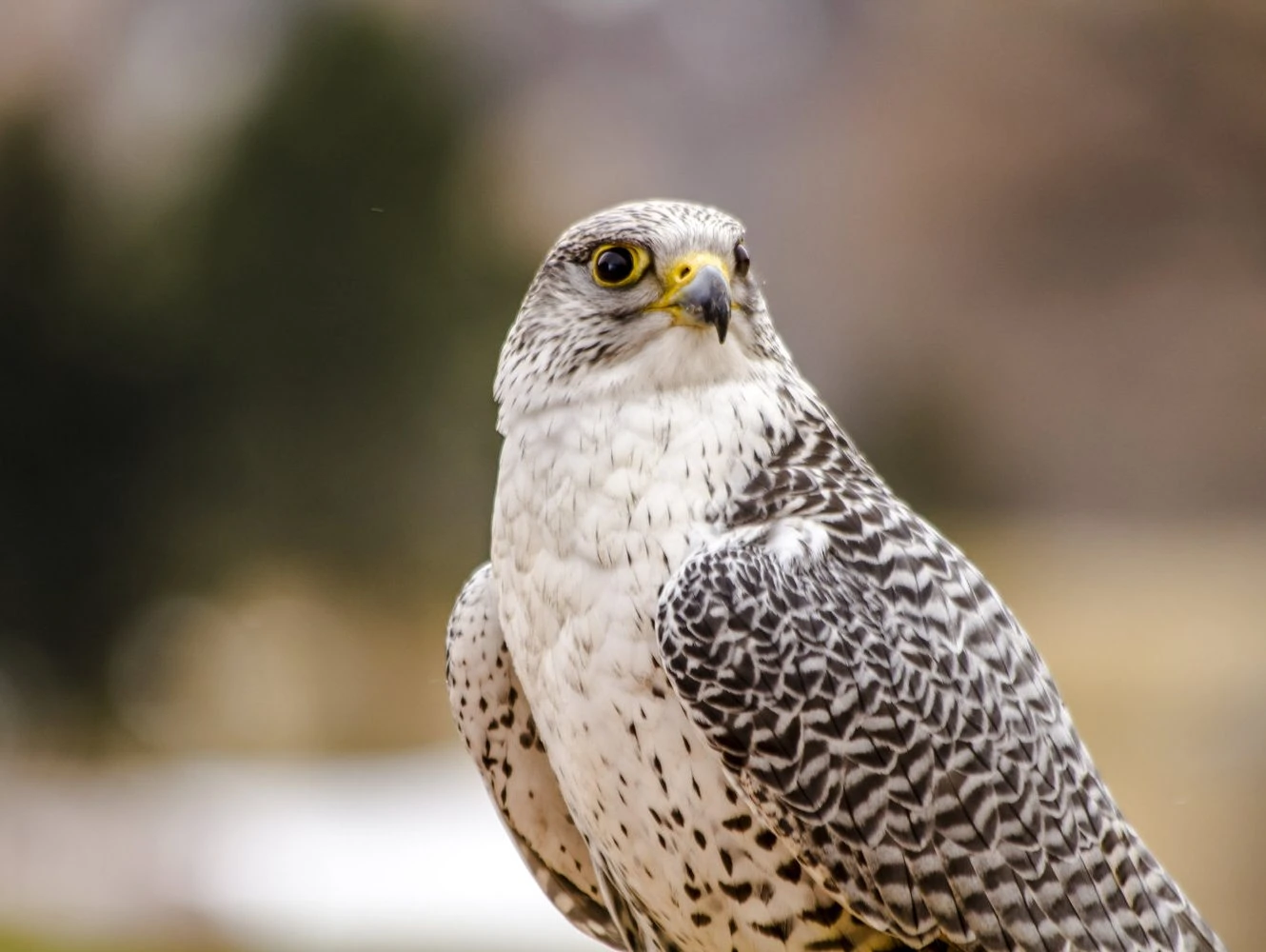
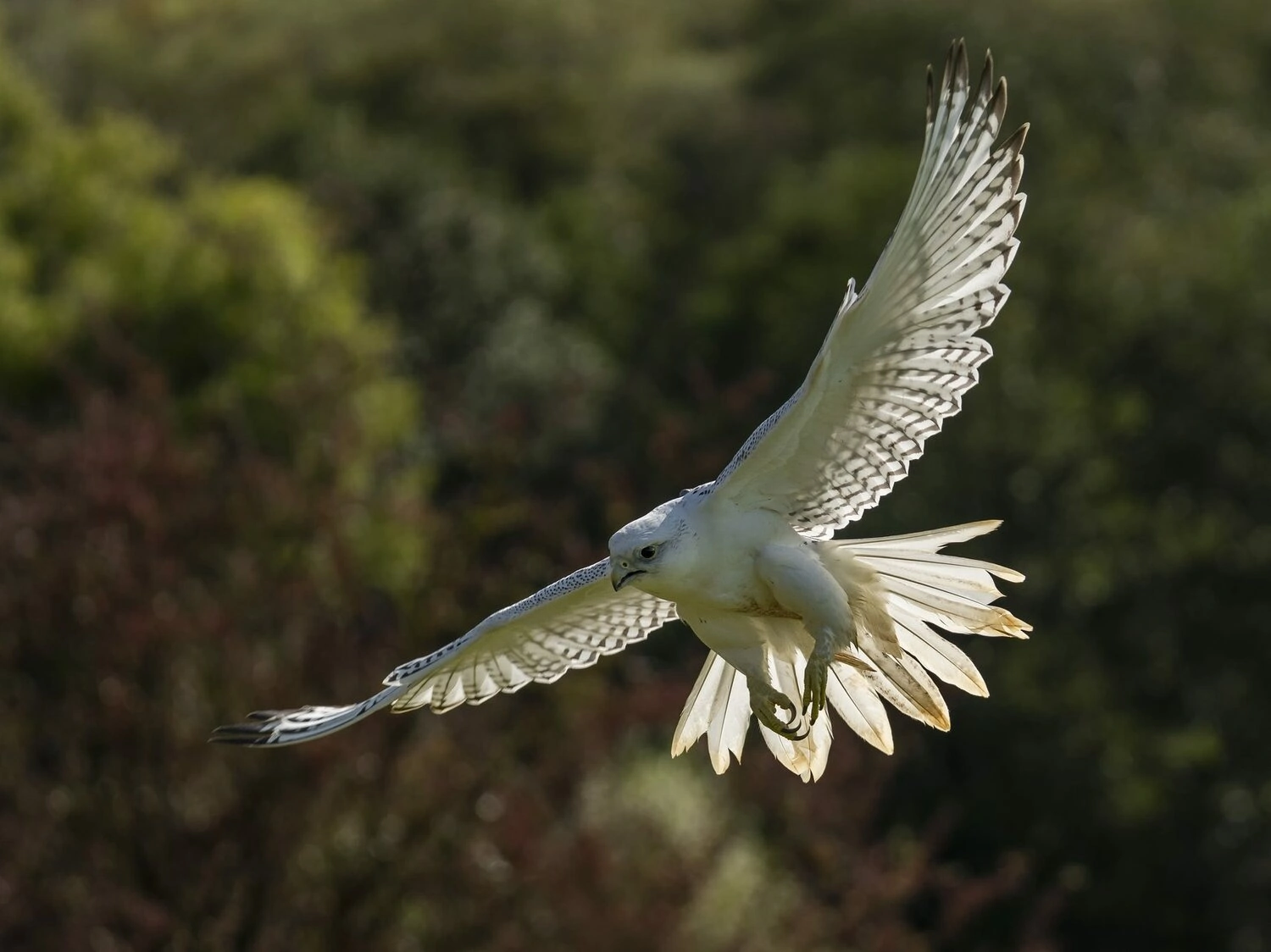
Gyrfalcons are spotted all year along the coast of Alaska but they are most common from mid-May to November.
Gyrfalcons are the largest Falcons and are apex predators of the Arctic, where they snatch birds from the sky or dive at great speed to catch unsuspecting prey from the ground.
Their coloring varies greatly but generally have three morphs – white, silver/gray, and dark. Silver/gray is most common in North America
The silver/gray morphs are heavily banded gray and white on their upperparts but some are mostly gray without obvious banding. Their underparts are evenly spotted and white at the throat. Juveniles have solid dark heads and are browner overall.
The White morphs of Gyrfalcons are white with brown/black barring on their upperparts with dark wingtips and a white tail. Some birds have barring on their tails and spots on their breasts. Juveniles are similar but have more barring on their upperparts but have faint streaks on their underparts.
- Falco rusticolus
- Length: 20 – 25 in (51 – 64 cm)
- Weight: 41.6 oz (1179 g)
- Wingspan: 48 – 64 in (122 – 163 cm)
Gyrfalcons are found predominantly in the arctic and sub-arctic around the world. Those that breed in the high arctic of Canada migrate to the rest of Canada and into the United States for winter.
You can find Gyrfalcons in one of the harshest places on earth, the arctic tundra (treeless shrublands and plains). They usually stay on cliffs near shorelines or rivers and with a vast open space where they can easily hunt prey. When they migrate during the winter, they stay in areas with plenty of birds for them to hunt, like coasts, reservoirs, grasslands, farmlands, and river valleys.
Gyrfalcon Call:
Fun Fact: When the chicks aren’t able to finish off their meal, the female Gyrfalcon will keep or store their leftovers behind some vegetation to retrieve later.
11. White-tailed Ptarmigan
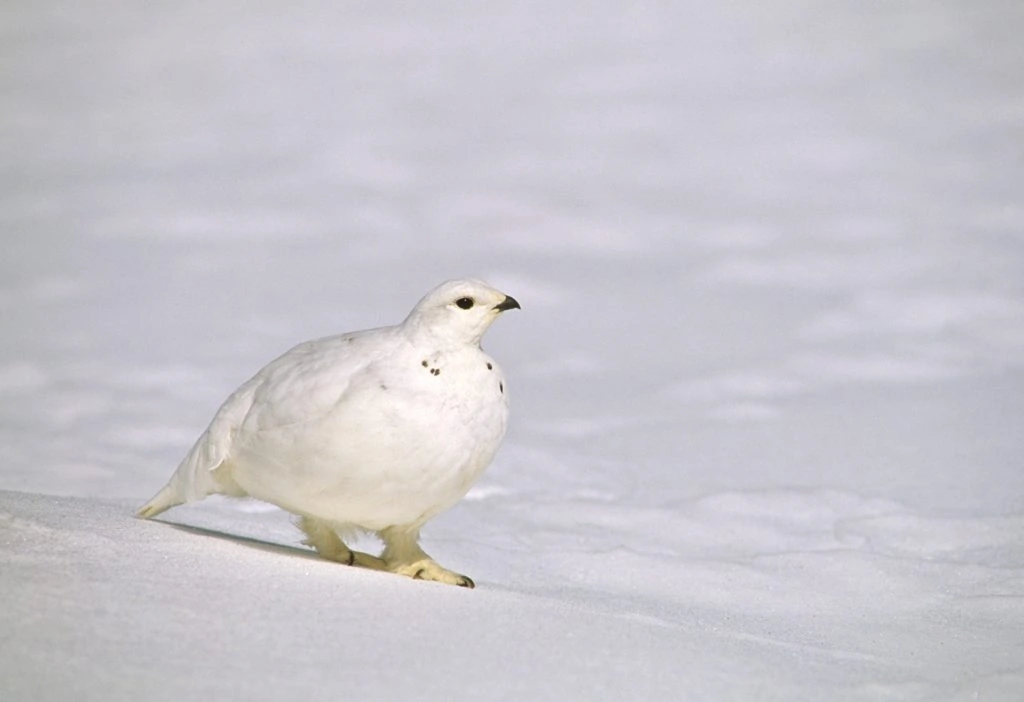
White-tailed Ptarmigans are not very common in Alaska but they can be spotted in the southeast of the state all year.
How Frequently White Birds Are Spotted In Alaska In Summer And Winter
Checklists are a great resource to find out which birds are commonly spotted in your state. These lists show which white birds are most frequently recorded on checklists on ebird in summer and winter in Alaska.
White Birds in Alaska in summer:
Snow Bunting 7.3%
Tundra Swan 6.4%
Trumpeter Swan 4.5%
Willow Ptarmigan 3.8%
Rock Pigeon 3.7%
Snow Goose 2.9%
Rock Ptarmigan 2.4%
Snowy Owl 1.6%
Great Blue Heron 1.5%
Gyrfalcon 0.8%
White-tailed Ptarmigan 0.1%
White Birds in Alaska in winter:
Rock Pigeon 8.9%
Great Blue Heron 4.2%
Trumpeter Swan 3.3%
Snow Bunting 2.7%
Willow Ptarmigan 0.6%
Rock Ptarmigan 0.2%
Tundra Swan 0.2%
White-tailed Ptarmigan 0.1%
Gyrfalcon 0.1%
Snow Goose 0.1%
Snowy Owl 0.1%

